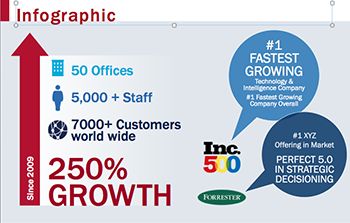Has Your Website Entered the 4th Dimension?
For much of the life of the commercial web, websites were one dimensional, essentially online brochures that over time became large and often unruly repositories of tactical content. But, in just a few short years after the recession, websites have catapulted to the 4th dimension.
Skip forward to today where I just returned from a meeting with a client for whom we were hired to do a website. As it often turns out, we identified that their website was the strategic doorway to the other dimensions of the business in which the website lives: brand strategy, content (marketing) strategy and design strategy.
Brand Strategy for Websites – the 2nd dimension Many of our clients have multiple products or services, speak to different audiences and have a different set of competitors for each product or service. They are often confused about how to architect their websites because there is often no apparent commonality in their audiences or offerings, so they focus on product or technology, which quickly gets tactical.
Many of our clients have multiple products or services, speak to different audiences and have a different set of competitors for each product or service. They are often confused about how to architect their websites because there is often no apparent commonality in their audiences or offerings, so they focus on product or technology, which quickly gets tactical.
At this juncture we take them back to their brand strategy (or identify need for one); that underlying value proposition that unifies the seemingly disparate. If we discover that they are not able to articulate a clear and compelling brand strategy, they will have trouble architecting or providing concise, compelling content for a website. In the rush of trying to get s____ done, the brand strategy, which yields the ever important “messaging platform” can get glossed over. Doing the brand strategy work upfront saves massive time on a typical website project.
Design Strategy for Websites – the 3rd dimension
With websites increasingly addressing visitors on mobile devices, the ratio of words to images  continues to shift toward less copy and more images. Our clients no longer want a whole site of generic stock images but instead want the images to convey meaning. Infographics are a way of expressing often quantative data in a qualitative storytelling mode. Infographics, icons and other graphics must work much harder now that there are less words to tell a company’s story. We must distill strategic concepts into compelling visual stories that are visually branded in a cohesive way and can be leveraged on the web, in Powerpoint, tradeshow booth graphics, digital presentations and collateral. And repurposing is the essence of content marketing.
continues to shift toward less copy and more images. Our clients no longer want a whole site of generic stock images but instead want the images to convey meaning. Infographics are a way of expressing often quantative data in a qualitative storytelling mode. Infographics, icons and other graphics must work much harder now that there are less words to tell a company’s story. We must distill strategic concepts into compelling visual stories that are visually branded in a cohesive way and can be leveraged on the web, in Powerpoint, tradeshow booth graphics, digital presentations and collateral. And repurposing is the essence of content marketing.
Content (Marketing) Strategy for Websites – the 4th dimension While copy for websites used to begin once the information architecture (site map) was finalized, today the most important dimension of the website is the content (marketing) strategy. Assuming that the commonly accepted purpose of the website is to serve as a customer engagement channel and generate leads, you must address your content strategy much earlier in the web process. The components of your content strategy include:
While copy for websites used to begin once the information architecture (site map) was finalized, today the most important dimension of the website is the content (marketing) strategy. Assuming that the commonly accepted purpose of the website is to serve as a customer engagement channel and generate leads, you must address your content strategy much earlier in the web process. The components of your content strategy include:
- Buyer Personas – In order to make your website relevant to solving the problems of your audience, creating a persona of the buyer or the problem a buyer has is the first step toward a relevant website. And relevancy is the watchword Google considers when ranking your site.
- SEO: although Google has made it harder to track keywords, they are still enormously useful in crafting content for your site. Getting keywords right goes a long way toward producing relevant content.
- Calls-to-Action – Think less about your home page as the be-all and end-all. Every page in your site should be considered a landing page and have some sort of “call-to-action” to enable your audience to engage with you. This can be a white paper, webinar, related link, phone #, etc.
- Offer Creation – Create offers for visitors to engage with you at increasingly deeper levels. This builds your “thought leadership credentials” and over time, a valuable library of resources through which visitors will engage.
- Website Analytics – Tracking site visits to specific pages, repeat visitors and “bounce rate” are some of the ways you can gauge whether your content is resonating. The data will tell you if your content strategy is getting the desired results or whether you need to rethink or refine content to meet your goals.
Website copywriting is just tip of the iceberg. Like everything else, it requires a considered strategy.
- Continuous Improvement – Thinking about your website as a continuous process of improvement rather than an event to get done and check off your list is the surest way towards it becoming the powerful strategic channel it should be.
Is your website operating in the 4th dimension?
